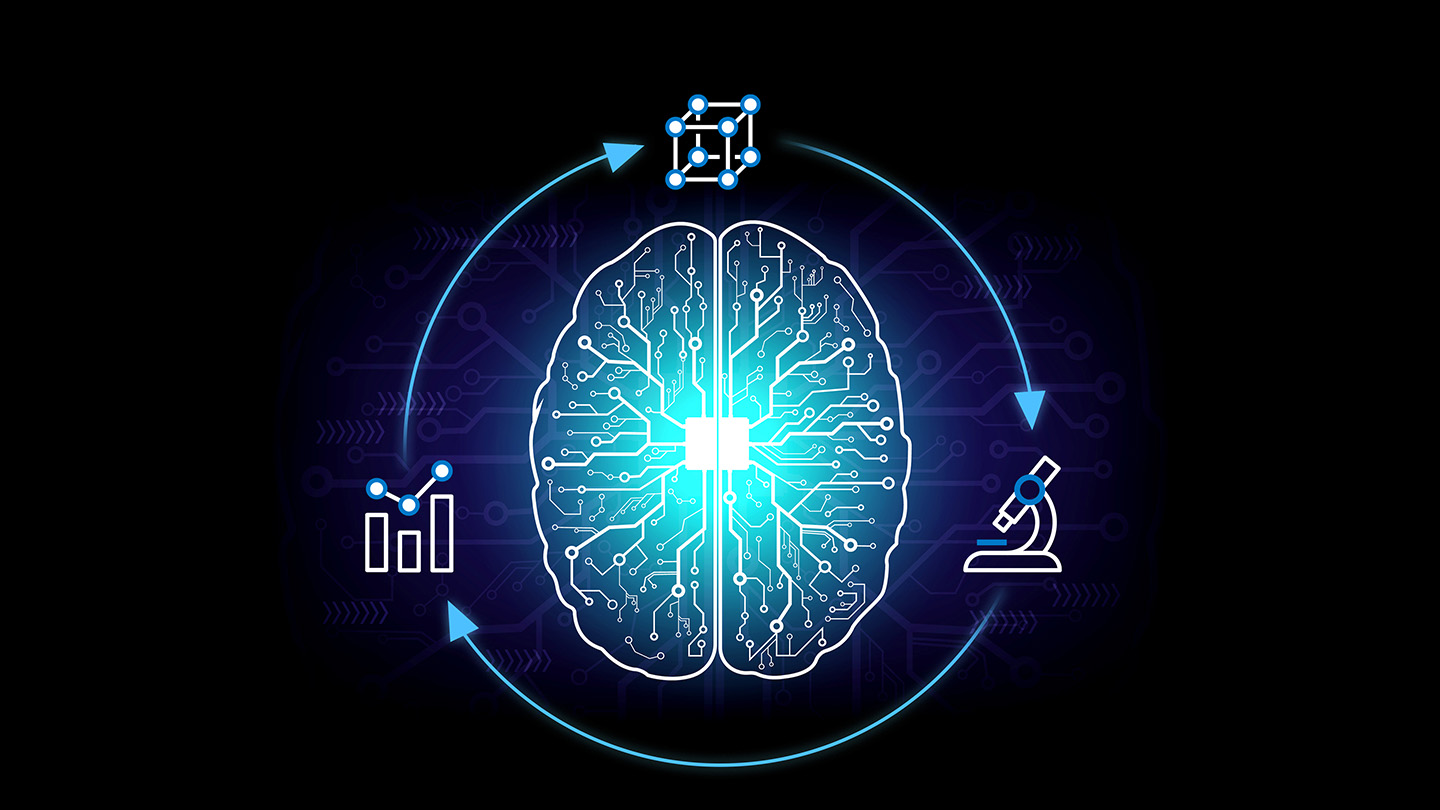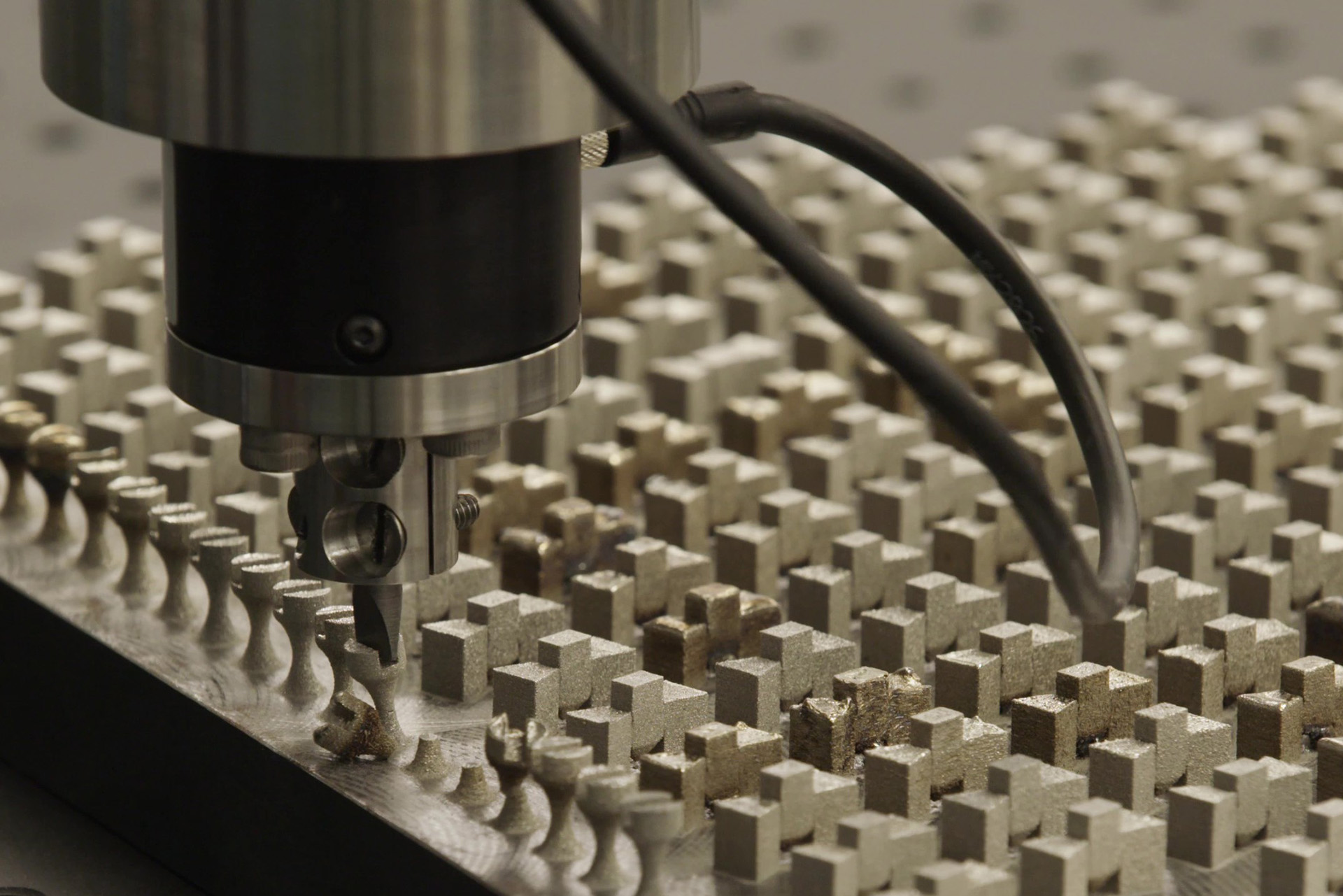Targeted AI Discovery
Stiles and the APL team are working on a project known as MITHRIL — short for Material Invention Through Hypothesis-unbiased, Real-time, Interdisciplinary Learning — that draws on the combined expertise and creativity of materials researchers and computer scientists to discover materials in a targeted fashion.
“The basic concept is simple: If we’re trying to solve some problem that can be solved by a materials solution, we first need to describe it in terms of the desired parameters,” he explained. “And then we can use AI to traverse the possibility space to work backward from the desired material properties to the actual material.”
The reason AI is especially well suited to this challenge is twofold. First, the sheer number of possible materials makes the task almost inconceivably time-consuming for humans. Second, while both humans and computers reason from what is known, computers can be trained to systematically sample the unknown. This second reason is a big part of why Stiles and his team, which includes Nam Q. Le and Lisa Pogue, chose superconductors as a test case — there are enough known superconductors, and enough is known about their material composition, that untested compositions with high potential to be novel superconductors can be identified and targeted with AI.
The team leveraged large publicly available data sets of superconductors and other known materials to train their models. While useful, these data sets inevitably contain human biases, because scientists tend to look for new superconductors by making small tweaks to existing ones, rather than making big leaps that might lead to costly failures.
“By using AI, we’re able to understand the effects of human biases, systematically adjust to compensate for them and use them to our advantage to push the science forward,” Pogue explained. “We are beginning to identify promising regions in the possibility space where humans haven’t yet thought to look.”
Added Le, “This is where you can really see the combined power of human expertise and data-driven machine-learning algorithms. A lot of what we’re doing is built on efforts in the AI community to develop tools for things like computer vision and natural language and so on, but there’s a lot of domain-specific knowledge about materials that we have to provide for these models to work effectively for our purposes.”
“This approach is being continually improved and will allow us to develop the materials we need, at a drastically faster pace than was previously possible,” said Leslie Hamilton, an APL senior scientist who helps manage the Science of Extreme and Multifunctional Materials portfolio. “And this combination of AI and domain expertise should, in principle, be generalizable to other areas of material and chemical discovery, which is a very exciting possibility.”
Under the Hood: Deep Learning for Materials Science
Underlying MITHRIL are multiple machine-learning models designed to operate on experimental and computational materials science data. Christine Piatko and Alex New, machine-learning researchers at APL, have used these models for two different tasks: “screening” libraries of materials without known superconductivity and generating novel material structures.
Piatko and New developed the screening workflow by taking inspiration from similar procedures used in drug discovery. “In both problems, we have a large number of candidates that could potentially have some desired properties, and we need to be able to efficiently decide which candidates we want to make and measure next in the lab,” said New. “This procedure, combined with domain expert insight, is what yielded our novel superconductor discovery.”
More recently, the team has started working on the task of generating materials not found in any libraries. They’ve used a type of neural network known as a generative adversarial network, which relies on two AI systems working in combination to output potential material structures and assess how feasible they are. “The key challenge here is preventing the model from spitting out clearly impossible combinations of atoms,” said New. “So we’ve been integrating other machine-learning models into the workflow to enable us to filter out more of those obviously incorrect results.”
New emphasized that this work is only possible because of close collaboration between materials and AI specialists. “When we started, there was a lot of talking past one another without realizing it, but since then we’ve come up with better ways of formalizing and expressing our knowledge so we can effectively communicate with each other,” he said.
MITHRIL is part of an extensive portfolio of work at the Laboratory to accelerate the development of novel materials, from discovery to deployment. Similar approaches are being applied to discovery of materials with desirable magnetic properties for energy production, materials to enable more efficient battery technologies and high-strength, high-entropy alloys. APL researchers are also pioneering AI methods to test and characterize novel materials at a rate several orders of magnitude faster than conventional approaches.
Collaboration across the Johns Hopkins University system is integral to this work. Tyrel M. McQueen, a professor of chemistry at the Johns Hopkins Krieger School of Arts and Sciences, served as a co-principal investigator on MITHRIL. McQueen, a leading researcher in quantum materials, including superconductors and their synthesis, provided guidance and expertise at every stage. He also mentored Pogue, who began work on MITHRIL as a postdoctoral student in McQueen’s group and subsequently joined APL as a senior scientist. “[McQueen] has been an excellent collaborator, constantly looking for opportunities for us to expand our knowledge at the intersection of materials science understanding and application,” Stiles said.

